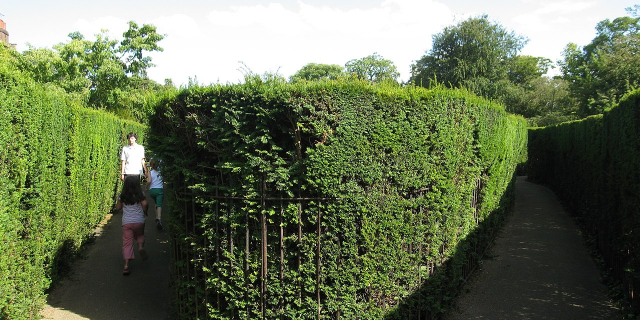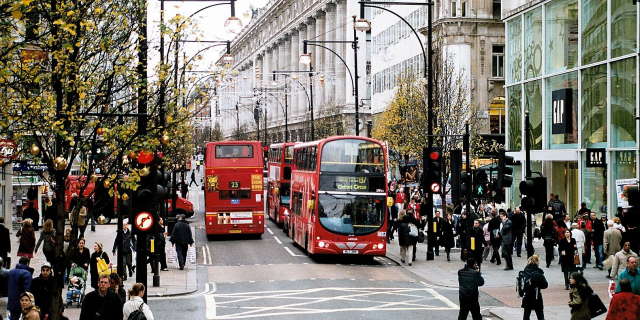Bushy Park
Bushy Park in the London Borough of Richmond upon Thames is the second largest of London's Royal Parks, at 445 hectares (1,100 acres) in area, after Richmond Park. The park, most of which is open to the public, is immediately north of Hampton Court Palace and Hampton Court Park and is a few minutes' walk from the west side of Kingston Bridge. It is surrounded by Teddington, Hampton, Hampton Hill and Hampton Wick and is mainly within the post towns of Hampton and Teddington, those of East Molesey and Kingston upon Thames taking the remainder.
In September 2014, most of it was designated a biological Site of Special Scientific Interest together with Hampton Court Park and Hampton Court Golf Course as Bushy Park and Home Park SSSI. The park is listed at Grade I on the Re...Read more
Bushy Park in the London Borough of Richmond upon Thames is the second largest of London's Royal Parks, at 445 hectares (1,100 acres) in area, after Richmond Park. The park, most of which is open to the public, is immediately north of Hampton Court Palace and Hampton Court Park and is a few minutes' walk from the west side of Kingston Bridge. It is surrounded by Teddington, Hampton, Hampton Hill and Hampton Wick and is mainly within the post towns of Hampton and Teddington, those of East Molesey and Kingston upon Thames taking the remainder.
In September 2014, most of it was designated a biological Site of Special Scientific Interest together with Hampton Court Park and Hampton Court Golf Course as Bushy Park and Home Park SSSI. The park is listed at Grade I on the Register of Historic Parks and Gardens.
The area now known as Bushy Park has been settled for at least the past 4,000 years: the earliest archaeological records that have been found on the site date back to the Bronze Age. There is also evidence that the area was used in the medieval period for agricultural purposes.[1]
When Henry VIII took over Hampton Court Palace from Cardinal Thomas Wolsey in 1529, the King named three parks that make up modern-day Bushy Park and a small area beside: Hare Warren, Middle Park and Bushy Park. A keen hunter, he established them as deer-hunting grounds.[2]
His successors, perhaps less involved in traditional sporting activities, added a number of picturesque features, including the Longford River, a 19-kilometre (12 mi) canal built on the orders of Charles I to provide water to Hampton Court, and the park's various ponds. This period also saw the construction of the main thoroughfare, Chestnut Avenue, which runs from Park Road in Teddington to the Lion Gate entrance to Hampton Court Palace in Hampton Court Road. This avenue and the Arethusa 'Diana' Fountain were designed by Sir Christopher Wren as a grand approach to Hampton Court Palace.
 Chestnut trees in early autumn
Chestnut trees in early autumnThe park has long been popular with locals, but also attracts visitors from further afield. From the mid-19th century until World War II, Londoners came here to celebrate Chestnut Sunday and to see the abundant blossoming of the trees along Chestnut Avenue. The customs were discovered and resurrected in 1993 by Colin and Mu Pain.[3]
Among those who served as ranger (an honorary position, long including residence at Bushy House) was King William IV, while Duke of Clarence (1797–1830). To ensure his consort Queen Adelaide, could remain at their long-time home after his death, he immediately appointed her as his successor as ranger (1830–1849),[2] after whose death the position was left vacant and fell into disuse.[4]
During World War I, Bushy Park housed the King's Canadian Hospital, and between the wars it hosted a camp for undernourished children.
During World War II, General Dwight D. Eisenhower planned the D-Day landings from Supreme Headquarters Allied Expeditionary Force (SHAEF) at Camp Griffiss in the Park. A memorial by Carlos Rey [1] dedicated to the Allied troops who fell on D-Day now marks the spot where General Eisenhower's tent stood. The nearby Eisenhower House is named in the General's honour, and Shaef Gate is named after the Supreme Headquarters Allied Expeditionary Force.
From May 1942, a group of temporary buildings on the north-east of the park, codenamed Widewing, hosted the de facto headquarters of the US Eighth Air Force under Generals Carl Spaatz and, later, Ira Eaker.[5] Spaatz went on to command the US Army Air Forces throughout the European Theatre of Operations (ETO) and in early 1944 became commander of the newly formed US Strategic Air Forces (USSTAF) in Europe at Widewing. Also known by its US Army code, AAF-586, Camp Griffiss/Widewing was often confused with the wartime headquarters of VIII Fighter Command (part of Eighth Air Force) at Bushey Hall, near Watford, Hertfordshire.




































Add new comment